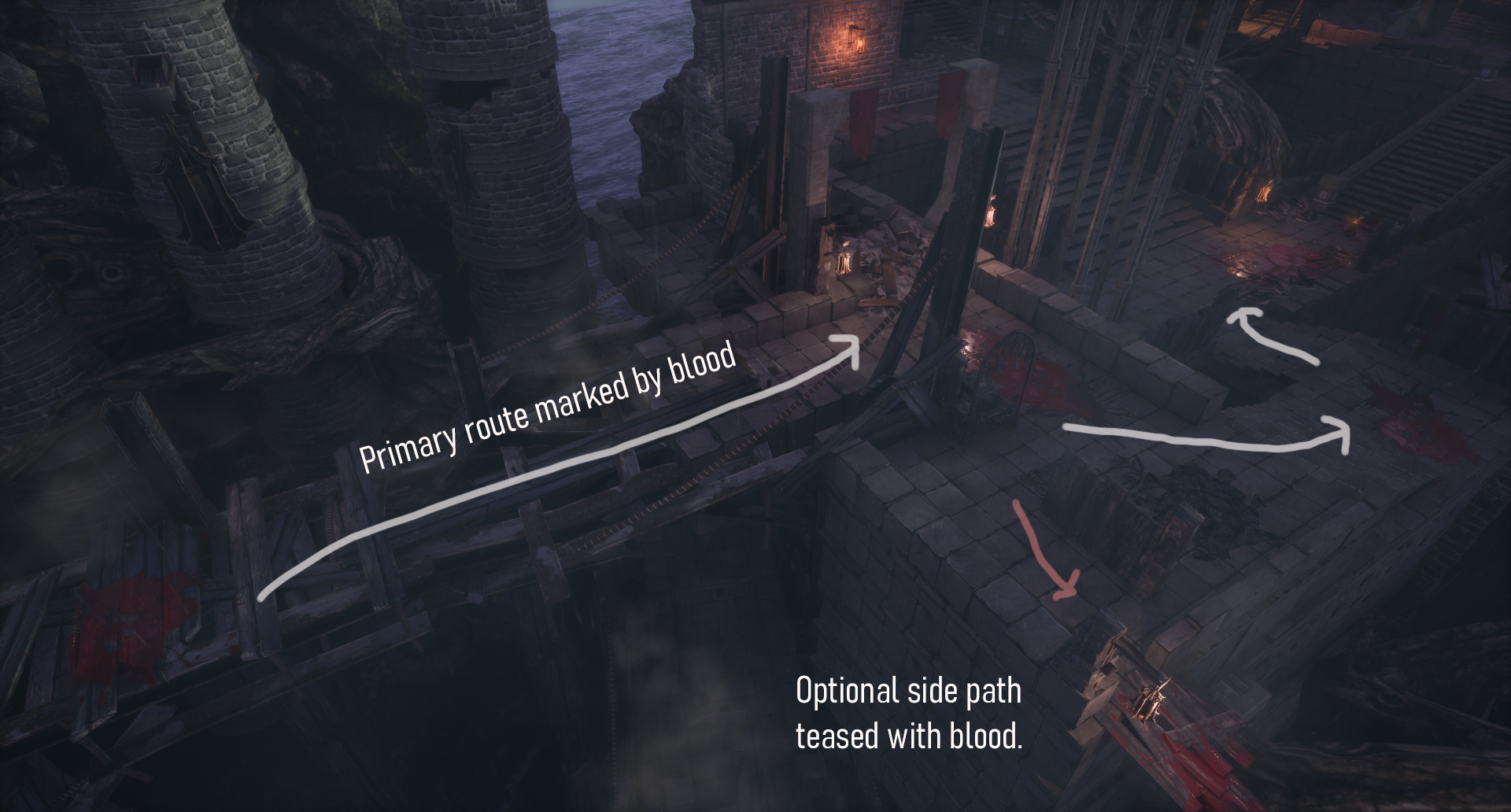Project OUtline
In this project I wanted to create an action role playing game isometric level in the style of Path of Exile and Diablo. The level is designed to guide the player from the left to right and find treasure chests along the way without getting distracted. Gameplay is mechanically light, with point and click navigation being the main interactive element. This was intentional to challenge myself to make a level engaging without any combat or other gameplay hooks.
I used the Epic Games Infinity Blade Grasslands asset pack to help capture the dark gritty fantasy tone of the aforementioned games.
VIDEO WALKTHROUGH
While the level is best experienced through play, this video walkthrough breaks down the level's key concious design choices.
DESIGN PROCESS
I began by looking at techniques Diablo and PoE use for creating levels. While both heavily rely on modular random level generation, I noticed that both preplot their level structures in blocks (almost like a tile map). These square block plots show desired paths and player routes, with clearly defined exit and entry points.
I planned out a rough outline of my level that way, with a distinct beginning at the far left and ending at the far right.
Initially, I found it challenging to give the player interesting things to do in the isometric perspective with my mechanic limitations (no jumping, no physics). I decided adding interactable treasure chests to draw players to locations and reward them for exploration would add depth.
I also added blood splatter decals as a way to breadcrumb the play, leading them to my desired endpoint on the right edge of the map. The blood acts as a trail of events that have already happened, which leads the player to new points of curiosity.
I also created natural frames made with archways and fallen rubble, which also help to drive the player forward in my intended direction.


I tried to make wide areas (like at the beginning) subtly narrow into a tighter space, gently pushing the player in the right direction. This technique is better for transition areas between dungeon rooms and boss arenas, less so in non-mechanical levels like this but I still found it useful to funnel players. I also try to keep pathways clear of distracting geometry, environments are instead cluttered around the edges to make the route stand out.
CHALLENGES
During playtests players were originally ignoring many of my off-main-route treasure chest locations. In response I added more lighting to entrances of these spots to try and draw players to the more discrete treasure chest locations. I found this a delicate balancing act, because Warm coloured lighting is used throughout the level to indicate intended paths and exit points to the player. In particular, the exit gate has brightly lit warm lights drawing the player towards it. If I I added too much light it could appear to the player that it would actually be the primary intended path.


The level adopts circular and looping branch paths as much as possible. Areas that appear branching loop around each other without complete backtracking, giving the player a reason and opportunity to explore the other way without wasting their time. It feeds into good a flow of play and reduces backtracking fatigue.
For player navigation and containing players to the desired paths, nav mesh bounds volumes did a lot of the work for restricting player movement. Playtests revealed to me that were still ways of escaping these tightly contained zones. Invisible volumes deployed for unexpected areas that players could access through abusing the navmesh controller. I also deployed cobwebs early on to to deter the player and suggest to them that cobwebbed areas are inaccessible.
Landmarks are a conventional part of level design that were a challenge to utilise in this project (because of the isometric camera angle). Near the end of the level I try to use the big overgrowing tree used to orient players, as it is visible from multiple points in the map, subconsciously guiding direction.